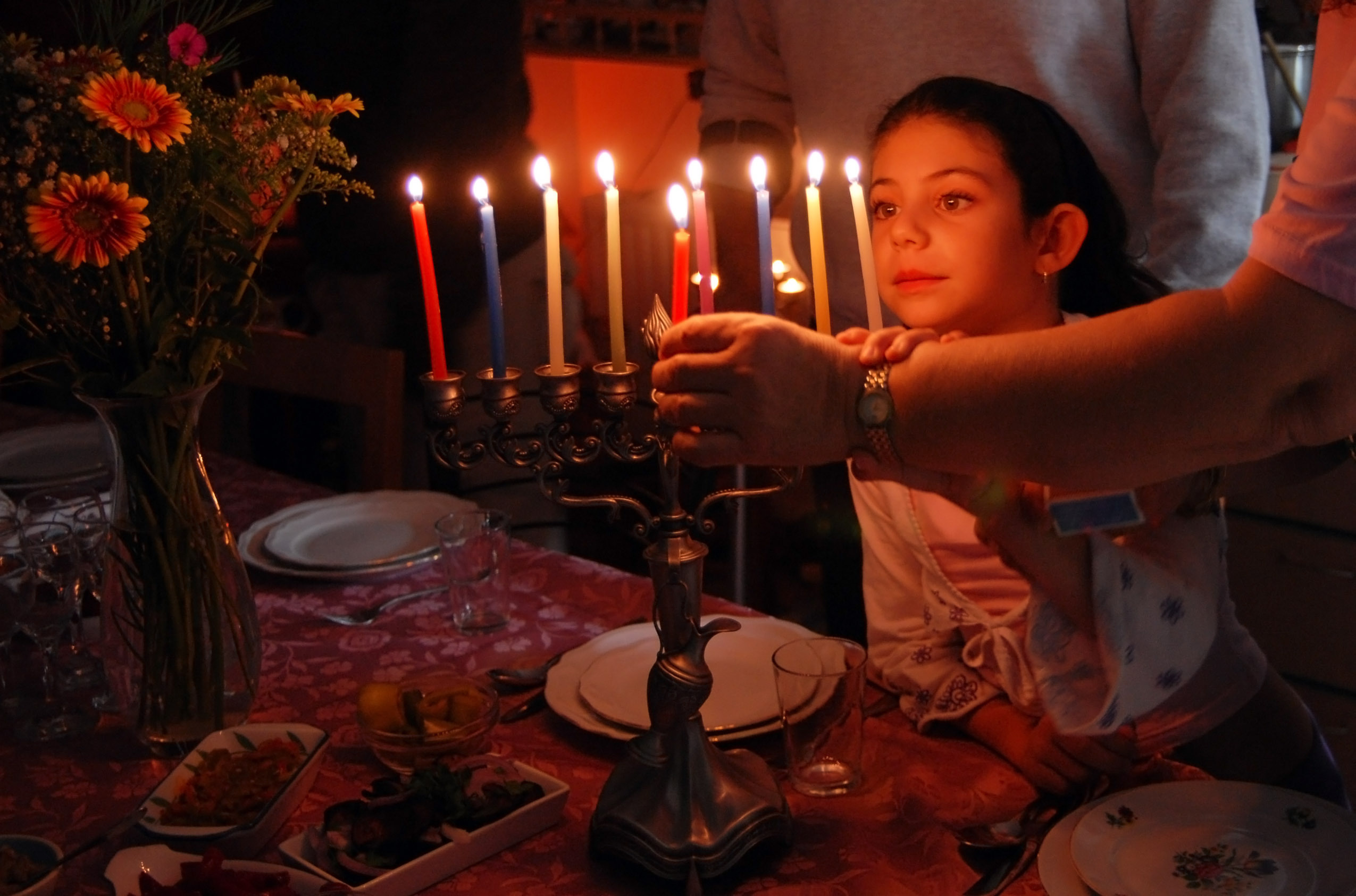Menorah is a type of candlestick or lamp with several branches. It is associated with Jewish tradition. In the Book of Exodus in the Bible , the craftsman Bezalel was chosen to fashion the first menorah. It was made of gold and had three branches on each side of a central post. Each branch and the central post held a separate oil lamp, for a total of seven. Priests lit each lamp with a wick placed in pure olive oil.
The earliest menorahs were placed inside the Tabernacle , a shrine carried by the Israelites during their flight from Egypt to the Promised Land of Canaan. When Solomon , the third king of Israel, built the Temple in Jerusalem , he had ten menorahs placed inside to provide light. It is likely that at least one of the lamps was kept burning all the time, as an “eternal light.” As symbols, the seven lamps of the menorah represented the enlightenment the Israelites would gain through worshipping God. In the Book of Genesis , seven is the number of days in which God created the world, then rested. The menorah’s central lamp represents the Sabbath , the day of rest.

A menorah with seven branches was frequently pictured in Jewish art in following centuries. Today, it appears in the coat of arms of the country of Israel . It is widely recognized as an enduring symbol of the Jewish people .

Today, many hanukkiyahs hold candles rather than oil lamps. A central feature of the Hanukkah celebration is lighting the hanukkiyah, starting with one candle on the first night and ending with all eight by the final night. A separate, ninth, candle called the shamash is used to light the other eight candles.
